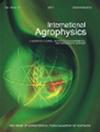Effects of wheat straw returning and potassium application rates on the physicochemical properties and lodging resistance of different stem internodes in direct-seeded rice
IF 1.7
4区 农林科学
Q2 AGRONOMY
引用次数: 1
Abstract
. This study aimed to evaluate the relationship between the physicochemical properties and lodging index of different stem internodes and the yield of direct-seeded rice. Two treatments of wheat straw returning (returning and non-returning) and five potassium application rates of 0, 62.5, 125, 187.5, and 250 kg ha -1 were applied. Wheat straw returning combined with a potassium application rate of 125 kg ha -1 significantly promoted potassium accumulation, increased total soluble sugar and lignin contents, improved breaking moment, reduced the flattening rate and lodging resistance index of different internode stems, and increased the yield. Correlation analysis revealed that compared with those of the 4th and 5th internodes, potassium content and accumulation and total soluble sugar and lignin contents of the 3rd internode were significantly positively correlated with yield (r = 0.85**-0.93**) and negatively correlated with the stem flat rate and lodging index (r = -0.67*– -0.79**), which improved lodging resistance in collaboration with the 4th and 5th internodes (r = 0.82**-0.95**). Increasing potassium accumulation, total soluble sugar and lignin content, and reducing stem flatness of the 3rd stem internodes are important factors for improving lodging resistance of direct-seeded rice and may provide a basis for improving the 4th and 5th stem internodes.麦秆还田和施钾量对直播水稻不同茎节理化性质和抗倒伏性的影响
本研究旨在评价不同茎节的理化性质和倒伏指数与直播水稻产量之间的关系。采用秸秆还田和不还田两种处理,施钾量分别为0、62.5、125、187.5和250 kg ha-1。秸秆还田与125 kg ha-1的施钾量相结合,显著促进了钾的积累,增加了总可溶性糖和木质素含量,改善了破碎时刻,降低了不同节间茎的压扁率和抗倒伏指数,提高了产量。相关分析表明,与第4和第5节间相比,第3节间的钾含量、积累量、总可溶性糖和木质素含量与产量呈显著正相关(r=0.85**-0.93**),与茎扁平率和倒伏指数呈负相关(r=-0.67*-0.79**),与第4和第5茎节协同提高了倒伏抗性(r=0.82**-0.95**)。增加钾积累、总可溶性糖和木质素含量以及降低第3茎节的茎平坦度是提高直播水稻倒伏抗性的重要因素,可为提高第4和5茎节提供依据。
本文章由计算机程序翻译,如有差异,请以英文原文为准。
求助全文
约1分钟内获得全文
求助全文
来源期刊

International Agrophysics
农林科学-农艺学
CiteScore
3.60
自引率
9.10%
发文量
27
审稿时长
3 months
期刊介绍:
The journal is focused on the soil-plant-atmosphere system. The journal publishes original research and review papers on any subject regarding soil, plant and atmosphere and the interface in between. Manuscripts on postharvest processing and quality of crops are also welcomed.
Particularly the journal is focused on the following areas:
implications of agricultural land use, soil management and climate change on production of biomass and renewable energy, soil structure, cycling of carbon, water, heat and nutrients, biota, greenhouse gases and environment,
soil-plant-atmosphere continuum and ways of its regulation to increase efficiency of water, energy and chemicals in agriculture,
postharvest management and processing of agricultural and horticultural products in relation to food quality and safety,
mathematical modeling of physical processes affecting environment quality, plant production and postharvest processing,
advances in sensors and communication devices to measure and collect information about physical conditions in agricultural and natural environments.
Papers accepted in the International Agrophysics should reveal substantial novelty and include thoughtful physical, biological and chemical interpretation and accurate description of the methods used.
All manuscripts are initially checked on topic suitability and linguistic quality.
 求助内容:
求助内容: 应助结果提醒方式:
应助结果提醒方式:


